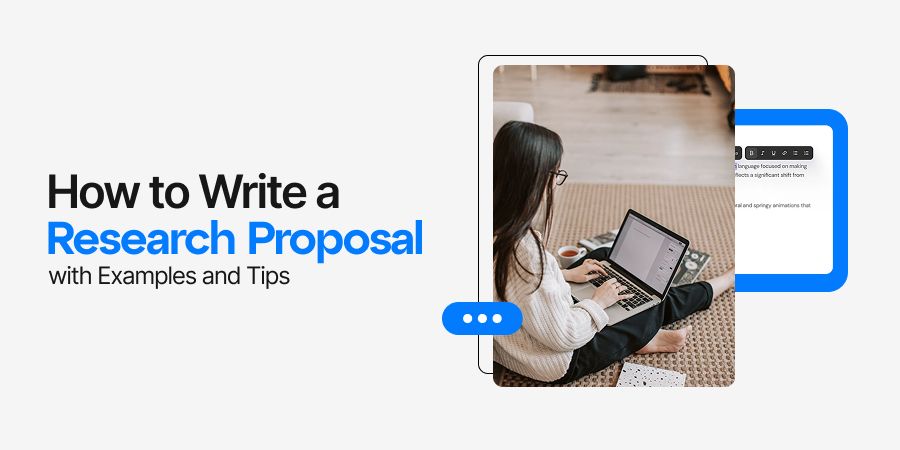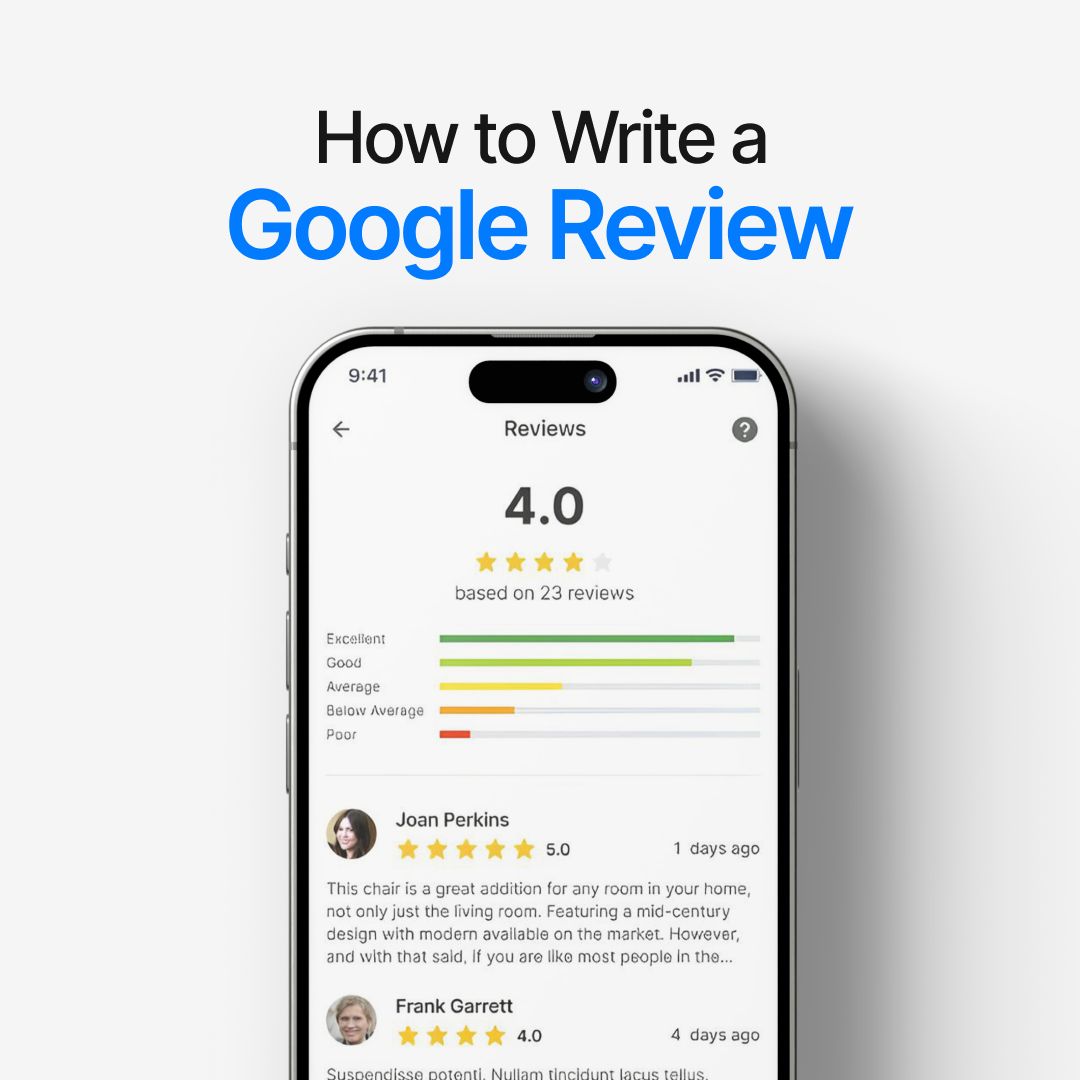
How to Write a Research Proposal, with Examples and Tips
Ever wondered why some promising ideas never see the light of day?
In research and academia, the missing link is often a strong proposal. A research proposal is more than paperwork, it is the blueprint that gives credibility and direction to your study.
Students, scholars, and professionals all face the same hurdle – turning a question or problem into a structured, convincing plan. Without it, approvals and funding rarely follow. With it, committees see value, feasibility, and purpose.
When exploring how to write a research proposal, remember that the document:
-
Demonstrates why your research topic matters.
-
Shows awareness of past studies and literature.
-
Explains your methodology and why it works.
-
Highlights the relevance and expected impact of your work.
Writing one is not about formality, it is about building a strong case for your research. This guide explains what a research proposal is, why it matters, and the steps you can take to write one that convinces decision-makers.
What Is a Research Proposal
A research proposal is a formal plan that outlines what you want to study, why it matters, and how you intend to approach it. Committees, supervisors, and funding bodies use it to judge not just the idea, but also the researcher’s preparation and clarity of thought.
Every proposal has two sides. One is academic, where you convince reviewers that the work adds to existing knowledge. The other is practical, where you show that your plan is realistic, measurable, and worth investing resources in. A poorly framed idea, even if exciting, risks being rejected because it fails to explain execution.
Reasons Why a Research Proposal Important
A strong research proposal carries weight for multiple reasons:
-
Approval and Funding – Universities, grant providers, and boards rarely greenlight projects without a clear proposal.
-
Clarity of Direction – Writing one forces you to refine objectives, scope, and methodology before you start.
-
Academic Contribution – Demonstrates how your study fits into broader research, filling gaps or challenging current knowledge.
-
Professional Impression – A polished proposal signals credibility and discipline, which directly impacts your reputation.
Proposals in disciplines such as business, education, health, and social sciences often decide who gets selected for competitive programs or who wins limited grants. Beyond academia, organizations also demand structured proposals for pilot studies, market research, and policy analysis.
A well-prepared document turns vague interest into solid approval. Without one, even the most compelling research question risks being overlooked.
Core Components of a Research Proposal
A proposal is not just a pitch. It is a blueprint that shows what you will research, how you plan to do it, and why the effort is worth attention. Skipping key sections or writing them weakly often leads to rejection. Here are the parts that form the backbone of a strong proposal.
Title Page and Basic Information
The title is the first impression. It should capture the essence of your research question in a concise, academic tone. A good research proposal title tells the reader both the subject and the scope. Keep it under 15 words where possible.
-
Project title – descriptive but not exaggerated.
-
Researcher details – your name, institution, program.
-
Supervisor information – if applicable.
-
Submission date – especially relevant for funding or academic deadlines.
Abstract or Summary
A research proposal abstract is usually no longer than 300 words. It works as a mini-map, highlighting the topic, problem statement, methodology, and expected outcome. Even though it comes first in the document, most writers prepare it last, after refining the full draft.
Think of it as the “elevator pitch” for reviewers: enough context to spark interest, without drowning in detail.
Introduction and Problem Statement
The introduction sets the stage. It answers: what problem exists and why does it deserve study? Readers want a clear connection between the issue and the field it belongs to. A strong problem statement:
-
Explains the issue clearly.
-
Shows evidence through statistics, case studies, or scholarly references.
-
Demonstrates the gap in existing research.
The more concrete your problem definition, the easier it is to justify your research question later.
Literature Review
This section places your work within the context of previous studies. It is not a book report; it is an evaluation of how earlier research informs, supports, or contrasts your approach.
A good literature review in a research proposal:
-
Groups studies by theme or trend.
-
Highlights what is missing, outdated, or unresolved.
-
Positions your proposal as a step forward.
Use credible sources – peer-reviewed journals, academic books, and trusted databases. Avoid basing arguments on blogs or weak references, as committees often check citations carefully.
Research Objectives and Questions
Here you narrow down the exact direction of your study. Objectives are broader goals, while research questions drill into specifics. For example:
-
Objective: To explore how digital marketing impacts small businesses in urban markets.
-
Question: How do paid ads on Google influence revenue growth in small retail shops?
Be precise. Vague objectives make your proposal sound unfinished.
Methodology
Methodology explains how you will conduct the research. This section is critical, because reviewers judge feasibility here. Without clarity, they may assume the project is unmanageable.
A strong research methodology proposal includes:
-
Research design – qualitative, quantitative, or mixed.
-
Sampling strategy – size, selection method, relevance.
-
Data collection methods – surveys, interviews, experiments, or archival analysis.
-
Data analysis – statistical tests, coding, thematic analysis.
-
Limitations – factors you cannot fully control, but acknowledge.
The more structured this section, the higher the chance of approval.
Significance of the Study
This part answers: why should anyone care?
Explain how your research contributes academically, professionally, or socially. Show the potential benefits, whether it fills a theoretical gap, supports policymaking, or helps organizations solve real-world problems. Reviewers often highlight this section in their evaluations.
Timeline and Budget (If Required)
Funding applications usually ask for a timeline and budget. Even if optional, adding them makes your proposal more professional.
-
Timeline – outline stages such as research design, data collection, analysis, and final reporting. Use weeks or months, depending on project length.
-
Budget – list costs for data collection tools, travel, software, or assistants. Always justify each expense.
References and Appendices
Every claim should have a source. Use consistent citation styles (APA, MLA, Chicago, or Harvard). Appendices can include questionnaires, consent forms, or additional charts.
Step by Step Guide to Writing a Research Proposal
Writing a proposal can feel overwhelming until you break it down into manageable actions. Each stage adds clarity and ensures that what you submit looks complete, professional, and persuasive.
1. Define the Topic Clearly
The first task is choosing a research topic that is specific enough to explore in detail but broad enough to gather sufficient material. Avoid titles that are so general they sound like textbooks. Instead, phrase your topic in a way that signals depth.
-
Good example: Impact of Remote Learning on Student Engagement in Higher Education.
-
Weak example: Education and Technology.
2. Draft a Strong Problem Statement
A proposal without a clear problem statement feels hollow. Put effort into describing the problem, its context, and why it matters. Use statistics, recent reports, or academic sources to prove the issue is worth studying.
For instance, a problem statement on climate research might include recent IPCC data, while a proposal on entrepreneurship could cite failure rates among startups.
3. Set Research Objectives and Questions
This stage narrows the focus. State what your research intends to achieve and list the questions you aim to answer. Objectives highlight the broader aim, while questions point toward measurable outcomes.
-
Objective: To analyze how sustainable packaging impacts consumer perception.
-
Research question: Do eco-labels increase brand loyalty in the retail sector?
4. Conduct a Literature Review
Gather academic papers, journals, and credible reports that relate to your field. Instead of summarizing each study, organize them into themes or patterns. Point out gaps that your proposal seeks to fill. This demonstrates awareness and positions your work as valuable.
5. Plan the Methodology
Reviewers look closely at methodology to judge feasibility. Write down how you plan to collect and analyze data.
-
Research design: qualitative, quantitative, or mixed.
-
Data collection: surveys, interviews, case studies, experiments.
-
Analysis: statistical software, coding frameworks, or thematic analysis.
-
Sampling: who or what will be included, and why.
Mention limitations too. Acknowledging them builds credibility, since every project has constraints.
6. Explain the Significance
Describe why the research matters beyond personal interest. Does it address a policy gap? Will it help businesses or communities? Could it add fresh insight to academic debates? Reviewers value work that creates impact, not just knowledge.
7. Add Timeline and Budget (If Needed)
Even if not mandatory, a clear timeline strengthens your case. Break the project into phases – design, data collection, analysis, and report writing. If funding is involved, justify every cost in the budget.
8. Write the Abstract Last
Summarize the entire proposal in 200–300 words. Mention the research topic, problem, objectives, methods, and significance. The abstract often determines whether reviewers read the rest with interest, so it deserves careful attention.
9. Review and Edit
Read the draft several times. Check grammar, formatting, and citation style. Remove jargon or vague claims. A neat, polished proposal gives confidence that you will also execute the research with discipline.
Suggested read: How to Write a Research Paper
Examples of Research Proposals That Work
Example 1: Business and Entrepreneurship Proposal
Topic: The Role of Social Media in Startup Growth within Emerging Markets
-
Problem statement: Many startups fail within the first three years, partly due to weak marketing strategies. Social media offers low-cost exposure, but there is little research on its effectiveness in emerging markets.
-
Objectives:
-
To assess how social media influences customer acquisition.
-
To evaluate whether early adoption of digital marketing improves funding opportunities.
-
-
Methodology: Surveys of 150 founders, case studies of five high-growth startups, and data analysis of funding records over three years.
This example works because the proposal connects a clear business problem with measurable objectives. It is grounded in existing challenges and points to data-driven solutions.
Example 2: Education and Technology Proposal
Topic: Effectiveness of Gamification in Online Learning for Undergraduate Students
-
Problem statement: Online courses often face high dropout rates. Gamification has been proposed as a solution, but systematic studies are limited.
-
Objectives:
-
To analyze how gamification impacts student engagement.
-
To measure improvements in course completion rates.
-
-
Methodology: Mixed methods – data from a controlled experiment across two online classes, combined with student interviews.
This proposal example succeeds because it combines quantitative metrics (completion rates) with qualitative insights (student experiences). It creates a balanced, researchable scope.
Example 3: Environmental Science Proposal
Topic: Community-Based Approaches to Reducing Plastic Waste in Coastal Areas
-
Problem statement: Plastic pollution threatens marine biodiversity. Policies exist but lack ground-level engagement, leading to limited success.
-
Objectives:
-
To evaluate the effectiveness of community-led recycling programs.
-
To assess awareness campaigns and their impact on behavioral change.
-
-
Methodology: Fieldwork in three coastal towns, focus group discussions, and waste audits over six months.
This proposal shows strength because it combines practical fieldwork with broader implications. Reviewers see not just theory but also real-world application.
Common Features Across Good Research Proposals
-
A well-defined problem rooted in real-world context.
-
Objectives that are specific and measurable.
-
A methodology that is realistic, not overly ambitious.
-
A clear explanation of significance.
Good examples show how each section connects smoothly. They highlight not only what the researcher will do but also why it matters.
Tips to Strengthen a Research Proposal
A research proposal is not judged on length but on clarity, detail, and persuasiveness. Even a well-researched idea risks rejection if the proposal feels vague or disorganized. Adding strength is about refining each part so that reviewers trust the plan.
Be Clear About the Research Problem
Clarity begins with the problem statement. Avoid jargon or overly abstract descriptions. A strong proposal explains the gap in knowledge in a way that even someone outside the field can grasp.
-
Identify what is missing in current research.
-
State why the issue matters in academic or practical terms.
-
Link the problem directly to your proposed objectives.
Focus Objectives on Outcomes, Not Hopes
Objectives that sound like aspirations lack impact. A research committee looks for measurable outcomes. Replace phrases like “to explore” or “to understand” with action-driven language.
Examples of stronger phrasing:
-
To measure the effect of X on Y.
-
To evaluate the role of Z in a specific context.
-
To compare outcomes across different groups.
Keep Methodology Realistic and Justified
Many proposals fail because the methodology is either too broad or lacks justification. Be precise about what you plan to do and why those methods are suited for the research.
-
Specify tools, data sources, or analytical frameworks.
-
Show how the design ensures reliable results.
-
Acknowledge possible limitations and how you will handle them.
Strengthen Literature Review Connections
Reviewers expect to see awareness of existing work. A literature review should not just summarize sources but also show how your research fits into the conversation.
-
Highlight gaps in past studies.
-
Explain how your research builds on or challenges existing findings.
-
Use updated, credible sources to enhance trust.
Make Significance Unmistakable
Every proposal must answer: why does this research matter? Explain what happens if the research is conducted and what is lost if it is not.
-
Discuss potential academic contributions.
-
Point to social, business, or policy relevance.
-
Emphasize long-term impact, not just short-term results.
How Can You Write a Research Proposal With Chatly
Writing a research proposal often feels overwhelming because every section must be precise, supported, and persuasive. Chatly can make this process smoother by guiding structure, refining clarity, and offering relevant prompts at each step.
Here’s how Chatly helps:
- Draft Outlines Quickly – generate a structured roadmap that ensures no essential section is missed using AI Chat.
- Refine Language – polish tone, remove vague phrasing, and make technical points clear.
- Enhance Research Context – use AI Search to pull examples, definitions, or related frameworks that add depth.
- Check Readability – shorten long sentences, balance paragraphs, and create flow reviewers appreciate.
Instead of staring at a blank page, you can ask Chatly to build drafts, suggest references, or refine your final proposal so it meets academic and professional standards.
Conclusion
A research proposal is not just paperwork. It signals that you understand the problem, know the literature, and have mapped a practical way forward. Reviewers read it as proof of clarity, preparedness, and credibility.
The strongest proposals usually:
-
Link the research problem directly to objectives
-
Explain methodology with accuracy and confidence
-
Show relevance for both academics and practitioners
-
Balance ambition with realistic execution
Proposals that stand out frame contributions as meaningful for scholarship and society. With focus and refinement, the task shifts from obligation to skill, one that strengthens academic and professional growth.
Suggested Reads
If you found this guide helpful, you may also like:
Frequently Asked Questions
Most frequent questions related to writing a research proposal.
More topics you may like

How to Write a Google Review That is Helpful and Feels Unbiased

Muhammad Bin Habib

How to Write a Great Memoir: How to Start & Finish Your First Draft

Muhammad Bin Habib

How to Write a Letter of Discontent That Conveys What You Feel

Muhammad Bin Habib

How to Write a News Release (Complete Guide for 2025)

Muhammad Bin Habib

How to Write a Case Report in 2025

Muhammad Bin Habib
